This December, come experience some of the exquisite exhibits currently on display at the McGill Library. See stunning and historic items from McGill’s unieque collections, from 16th century volumes on the history of Jewish law to the dresses that highlight the role of germ theory in shaping everyday fashion in the late 19th and early 20th centuries. These phenomenal free exhibits are open to all and are accessible during their respective branch’s operating hours.
History of the Science of Islam
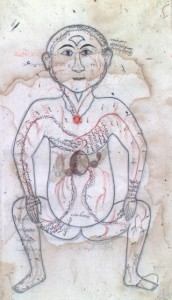 The History of Science in Islam exhibition highlights some of the prominent texts held by McGill that exemplify the intellectual depth, knowledge, and curiosity of Muslim scholars. The history of science and Islam dates back to the time of the prophet Muhammad. The exhibition before you is a representative holding of McGill’s unique collections; these collections live in the Islamic Studies Library, the Osler Library of the History of Medicine, and Rare Books and Special Collections. These examples were brought together to celebrate this fall’s Science Literacy Week. Some of the highlights include an 18th century copy of Ibn Manṣūr’s important work Tashrīḥ-i badan-i insān (Anatomy of the Human Body) and Ibn Sina’s al-Qānūn fi’l-ṭibb (Canon of medicine) as well as the recently published facsimile of al-Ghāfiqī’s Herbal.
The History of Science in Islam exhibition highlights some of the prominent texts held by McGill that exemplify the intellectual depth, knowledge, and curiosity of Muslim scholars. The history of science and Islam dates back to the time of the prophet Muhammad. The exhibition before you is a representative holding of McGill’s unique collections; these collections live in the Islamic Studies Library, the Osler Library of the History of Medicine, and Rare Books and Special Collections. These examples were brought together to celebrate this fall’s Science Literacy Week. Some of the highlights include an 18th century copy of Ibn Manṣūr’s important work Tashrīḥ-i badan-i insān (Anatomy of the Human Body) and Ibn Sina’s al-Qānūn fi’l-ṭibb (Canon of medicine) as well as the recently published facsimile of al-Ghāfiqī’s Herbal.
Location: Islamic Studies Library, Morrice Hall (3485 rue McTavish)
Persianate Literary Heritage: Hidden Treasures from McGill’s Collections
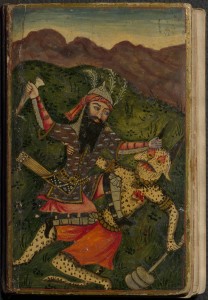 McGill’s Persian collection has a history that pre-dates the founding of the Institute of Islamic Studies (IIS) and the Islamic studies Library (ISL) in 1952. By the 1930s, the collection already included several hundred manuscripts, orphaned leaves and lithographs. The acquisition of Persian materials was the work of the University Librarian, Gerhard R. Lomer, and the private Montreal collector F. Cleveland Morgan who actively patronized the New York dealer Hassan Khan Monif. Furthermore, the distinguished Russian scholar of Ismailism, Wladimir Ivanow, was instrumental in developing the Blacker-Wood Persian Collection. Working for Casey A. Wood, the ophthalmologist, bibliophile and McGill Library benefactor, Ivanow brought together an exquisite collection of manuscripts on all aspects of Islam, including the natural and supernatural worlds; several of these manuscripts are included in this exhibition.
McGill’s Persian collection has a history that pre-dates the founding of the Institute of Islamic Studies (IIS) and the Islamic studies Library (ISL) in 1952. By the 1930s, the collection already included several hundred manuscripts, orphaned leaves and lithographs. The acquisition of Persian materials was the work of the University Librarian, Gerhard R. Lomer, and the private Montreal collector F. Cleveland Morgan who actively patronized the New York dealer Hassan Khan Monif. Furthermore, the distinguished Russian scholar of Ismailism, Wladimir Ivanow, was instrumental in developing the Blacker-Wood Persian Collection. Working for Casey A. Wood, the ophthalmologist, bibliophile and McGill Library benefactor, Ivanow brought together an exquisite collection of manuscripts on all aspects of Islam, including the natural and supernatural worlds; several of these manuscripts are included in this exhibition.
Location: Online at http://digital.library.mcgill.ca/persianate/
Justice, Justice Shall You Pursue: Jewish Law from Biblical Times to Present
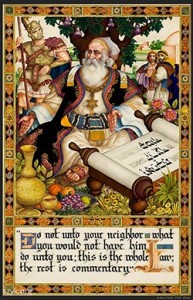 Jewish Law has a history of more than three thousand years. This extended time, can be divided in two main periods: The first broad period begins with the written Torah and ends with the completion of the Talmud. The second broad period is the post-Talmudic period, from the completion of the Talmud until our own day. The books for this exhibition come from the holdings of the Rare Books and Special Collections, the Nahum Gelber Law Library Special Collections, and the Humanities and Social Science Library. Among the books presented we find a volume of the Ḥamishah ḥumshe Torah: ketav yad Temani. A miniature Shulchan Aruch, printed in Venice, in 1574. One of the centerpieces is The Codex Maimuni: Moses Maimonides’ Code of law: the illuminated pages of the Kaufmann Mishneh Torah.
Jewish Law has a history of more than three thousand years. This extended time, can be divided in two main periods: The first broad period begins with the written Torah and ends with the completion of the Talmud. The second broad period is the post-Talmudic period, from the completion of the Talmud until our own day. The books for this exhibition come from the holdings of the Rare Books and Special Collections, the Nahum Gelber Law Library Special Collections, and the Humanities and Social Science Library. Among the books presented we find a volume of the Ḥamishah ḥumshe Torah: ketav yad Temani. A miniature Shulchan Aruch, printed in Venice, in 1574. One of the centerpieces is The Codex Maimuni: Moses Maimonides’ Code of law: the illuminated pages of the Kaufmann Mishneh Torah.
Location: Gelber Law Library (3660 rue Peel)
Across the Channel: English Lit. on the Continent in the 18th-Century
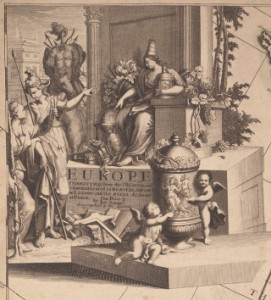 Despite the absence of well-established international distribution channels and networks, English literature was widely available to European readers during the 18th century in both English-language editions printed in cities all across the Continent and in translations and bi-lingual editions. This exhibition is built around the works of a number of authors including novelists, poets, essayists and philosophers, some of whom are major figures and others now hardly known, but all of whom had their works circulating on the Continent. Three authors–Oliver Goldsmith (1730?-1774), Laurence Sterne (1713-1768) and Frances Burney (1752-1840)–are representative of the whole.
Despite the absence of well-established international distribution channels and networks, English literature was widely available to European readers during the 18th century in both English-language editions printed in cities all across the Continent and in translations and bi-lingual editions. This exhibition is built around the works of a number of authors including novelists, poets, essayists and philosophers, some of whom are major figures and others now hardly known, but all of whom had their works circulating on the Continent. Three authors–Oliver Goldsmith (1730?-1774), Laurence Sterne (1713-1768) and Frances Burney (1752-1840)–are representative of the whole.
Location: McLennan Library Building, main floor lobby (3459 rue McTavish)
Sanitizing Style: Germ Theory and Fashion at the Turn of the Century
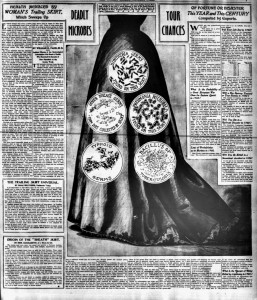 By the 1920’s germ theory had pervaded every aspect of daily life in the Western world. Discovered in the latter half of the 19th century, the theory, elaborated by scientists such as Louis Pasteur and Robert Koch, led to numerous changes in everyday living. Following the discovery of the Tuberculosis baterium, public health advocates rallied to create treatment and prevention programmes, including public health campaigns and anti-spitting legislation. They recognized the danger posed by tuberculosis-infected sputum on the streets swept up by the trailing skirts that fashionable women of the day favoured. Curated by Cynthia Tang, with rare books specialist Anna Dysert and costume curator Catherine Bradley, this exhibition explores the legitimacy that germ theory lent to the late 19th century movement to reform women’s dress, bringing together books, images, artifacts, and clothing pieces from collections across McGill.
By the 1920’s germ theory had pervaded every aspect of daily life in the Western world. Discovered in the latter half of the 19th century, the theory, elaborated by scientists such as Louis Pasteur and Robert Koch, led to numerous changes in everyday living. Following the discovery of the Tuberculosis baterium, public health advocates rallied to create treatment and prevention programmes, including public health campaigns and anti-spitting legislation. They recognized the danger posed by tuberculosis-infected sputum on the streets swept up by the trailing skirts that fashionable women of the day favoured. Curated by Cynthia Tang, with rare books specialist Anna Dysert and costume curator Catherine Bradley, this exhibition explores the legitimacy that germ theory lent to the late 19th century movement to reform women’s dress, bringing together books, images, artifacts, and clothing pieces from collections across McGill.













Leave a Reply
You must be logged in to post a comment.